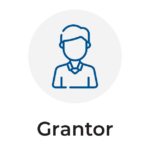Financial advisory firm owners face a variety of demands on their time, from working directly with clients, to growing their business, and achieving goals outside of work as well. Trying to address all of these demands can lead owners to feel like they don’t have enough time, their days don’t go as planned, and they can never quite get to the goals they’re trying to reach. A problem that most financial advisors try to solve by seeking out and adopting better tools and technology for time efficiency. But the truth is that everyone has the exact same number of hours to use during the day; breakthroughs in professional and personal fulfillment come not by making those hours more efficient, but by making more conscious decisions about how those hours are spent in the first place.
The key, then, is for firm owners to gain agency—the capacity to act independently and make their own free choices—over their time. Similar to saving enough money to gain financial independence, gaining agency over our time requires an intentional framework that regulates where one’s attention flows, to ensure that it is used in ways that best align time with goals, which in turn drives our growth, income, and happiness.
Creating a system to take agency over one’s time starts with understanding the difference between being available and being accessible. Being available is generally viewed as a best practice, as it means advisors can provide services to clients whenever they need to be served. But as a result, being available also means being at someone else’s disposal. This can lead to a seemingly infinite number of distractions and disruptions that can derail even the most well-scheduled day. In other words, being always available to clients means that a firm owner is never actually in charge of their time.
On the other hand, being accessible means being able to be reached. A firm owner who is accessible still provides services to clients that need to be served, but sets the terms for communication that work for both themselves and their stakeholders. Creating a model of accessibility requires the advisor to set clear expectations about how and when they will be accessible, though. Doing so, however, creates more calendar space and allows the advisor’s time to be more intentionally aligned with the experiences they want to have.
Once a firm owner has adopted a mindset of accessibility (and not just availability), it is important to create clarity about what they really intend to do with their time at work, once that time will be more consciously allocated. The key questions the owner needs to answer include how big they want their firm to be; who the ideal client is; what lifestyle they want to enjoy; and finally, how they can best invest their time based on the previous answers.
It is then time for the firm owner to connect this vision to reality by using time management models and techniques to make it clear to everyone what gets their focus, how their time is allocated, and what actions are assigned along the way. These tools include an annual firm calendar (which first spells out lifestyle goals and then lets the business decide how to use the remaining time), a model weekly schedule (which lays out how the owner spends their time each week), and personal productivity techniques (including morning routines, personal rituals, and professional routines).
Ultimately, moving to an accessible-not-available mindset and creating structures to manage this accessibility can help firm owners gain control over their time and better position themselves to achieve their personal and professional goals. Because at the end of the day, time can be neither created nor destroyed, but it can be wasted if it is not consciously allocated!








 Welcome back to the 249th episode of the Financial Advisor Success Podcast!
Welcome back to the 249th episode of the Financial Advisor Success Podcast!

